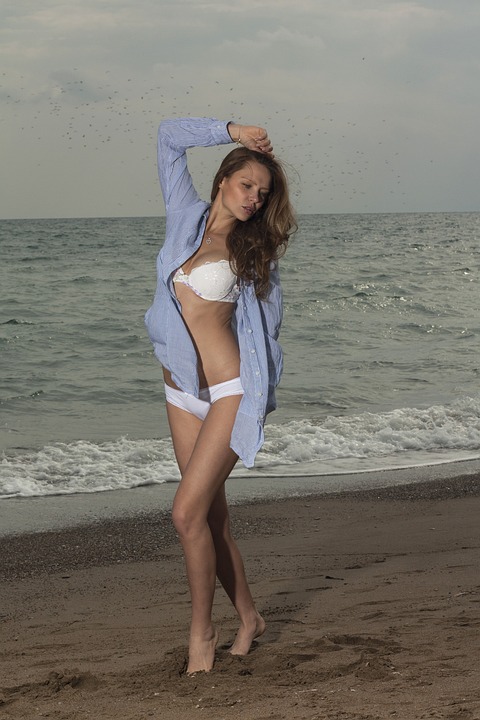The Evolution of Makeup Imagery: From Subtle Enhancements to Bold Transformation
Introduction
Makeup has had a significant impact on human society for centuries. Its role goes beyond enhancing beauty; it has the power to transform appearances and even create illusions. Over time, makeup imagery has evolved, reflecting the changing ideals, cultural influences, and technological advancements. This article delves into the fascinating journey of makeup aesthetics, from subtle enhancements to bold transformations.
Subtle Enhancements: The Birth of Makeup
The origins of makeup can be traced back to ancient civilizations, where men and women used natural pigments to enhance their features. These early makeup practices were often subtle, focusing on bringing out subtle beauty and highlighting specific facial features. Natural tones such as ochre, henna, and charcoal were used to enhance lips, eyes, and brows. The aim was to accentuate existing beauty rather than dramatically alter appearance.
Changing Beauty Ideals: Makeup in Ancient Empires
As societies evolved, so did their beauty standards. Ancient empires like the Egyptians, Greeks, and Romans embraced makeup as a symbol of status and beauty. The use of makeup became more prominent, with elaborate rituals and techniques developed to achieve desired looks.
The Egyptians: Beauty and Symbolism
In ancient Egypt, makeup held deep cultural and religious symbolism. Both men and women wore makeup as a reflection of their social standing and to honor the gods. Kohl eyeliner and vibrant eyeshadows were used to create dramatic, almond-shaped eyes associated with the Egyptian aesthetic. Red and ochre pigments were used to enhance lips and cheeks.
The Greeks: Subtle Elegance
Greek makeup emphasized natural beauty and achieving a balanced look. Pale skin was considered desirable, and women used white lead powder known as ceruse for a fair complexion. Light, earthy tones were used for eyes, while a restrained use of rouge was common to add a healthy flush to the cheeks.
The Romans: Opulence and Grandeur
Roman beauty rituals were extravagant and aimed at portraying opulence. They utilized vibrant colors like vermilion and cochineal for lips and cheeks. Dark shades were used around the eyes to create depth and intensity. Cosmetics were also a status symbol, with richer pigments and finer brushes reserved for the wealthy.
Modern Advances: The Renaissance and Beyond
The Renaissance marked a significant shift in makeup aesthetics. Pale complexions were still preferred, but makeup became more accessible to a wider population. However, societal attitudes towards makeup varied greatly, with some associating it with immorality while others embraced it as a form of self-expression.
The 20th Century: From Natural to Glamour
The 20th century witnessed further evolution in makeup imagery. The 1920s saw the rise of the “flapper” look with bold, dark eyes and deep red lips. The 1950s embraced a more natural and sophisticated vibe, with soft pastels and flawless skin coming into fashion. The 1980s brought about glamorous and dramatic looks with bold colors and strong contouring techniques.
The Digital Age: Makeup Transformations in the Social Media Era
The advent of social media revolutionized makeup imagery. Platforms like Instagram and YouTube made makeup tutorials and transformative looks accessible to the masses. Influencers and beauty bloggers showcased impressive makeup transformations, experimenting with vibrant colors, intricate designs, and even special effects makeup.
FAQs
Q: How has technology influenced makeup imagery?
Technology has played a significant role in shaping makeup imagery. Innovations in cosmetic products and tools have enabled more precise application and longer-lasting effects. Additionally, photo and video editing software have allowed makeup artists and enthusiasts to create flawless looks digitally, further blurring the line between reality and illusion.
Q: Is there a shift towards more natural makeup nowadays?
Yes, there has been a growing trend towards more natural-looking makeup in recent years. Many individuals now prefer a subtle enhancement rather than a dramatic transformation. This shift is driven by a desire for authenticity and embracing one’s unique features.
Q: How has diversity influenced makeup imagery?
Increasing awareness and celebration of diversity have had a profound impact on makeup imagery. Beauty brands are now expanding their shade ranges to cater to a wider spectrum of skin tones. The industry is also recognizing and representing various cultural makeup traditions, fostering inclusivity and boosting self-esteem among individuals from all backgrounds.
Conclusion
The evolution of makeup imagery mirrors the ever-changing beauty standards, cultural influences, and technological advancements throughout history. From the subtle enhancements of ancient civilizations to the bold transformations of the digital age, makeup has been a powerful tool for self-expression and creativity. As we move forward, makeup will continue to evolve, adapting to the changing ideals and reflecting the diverse world we live in.



